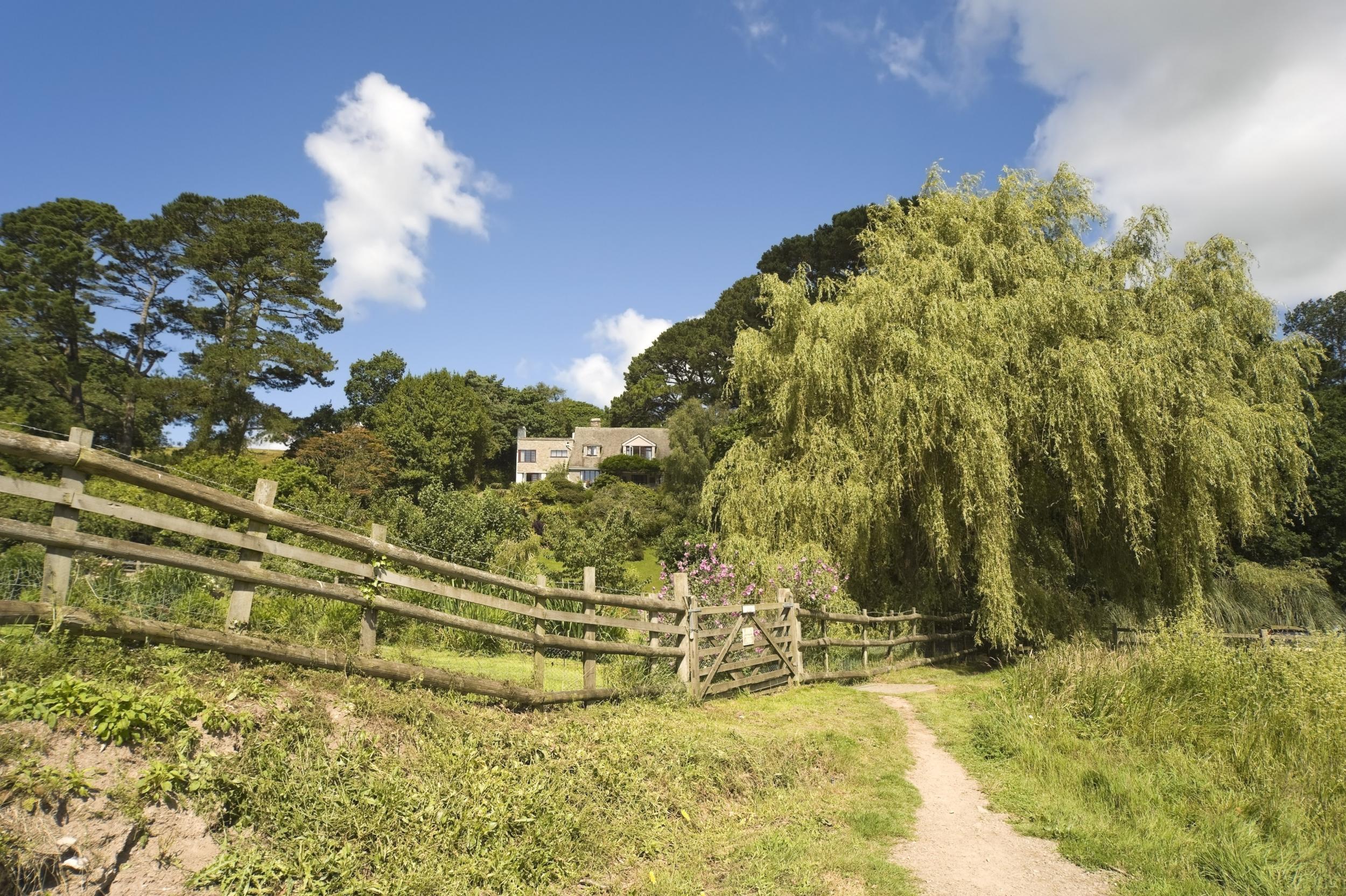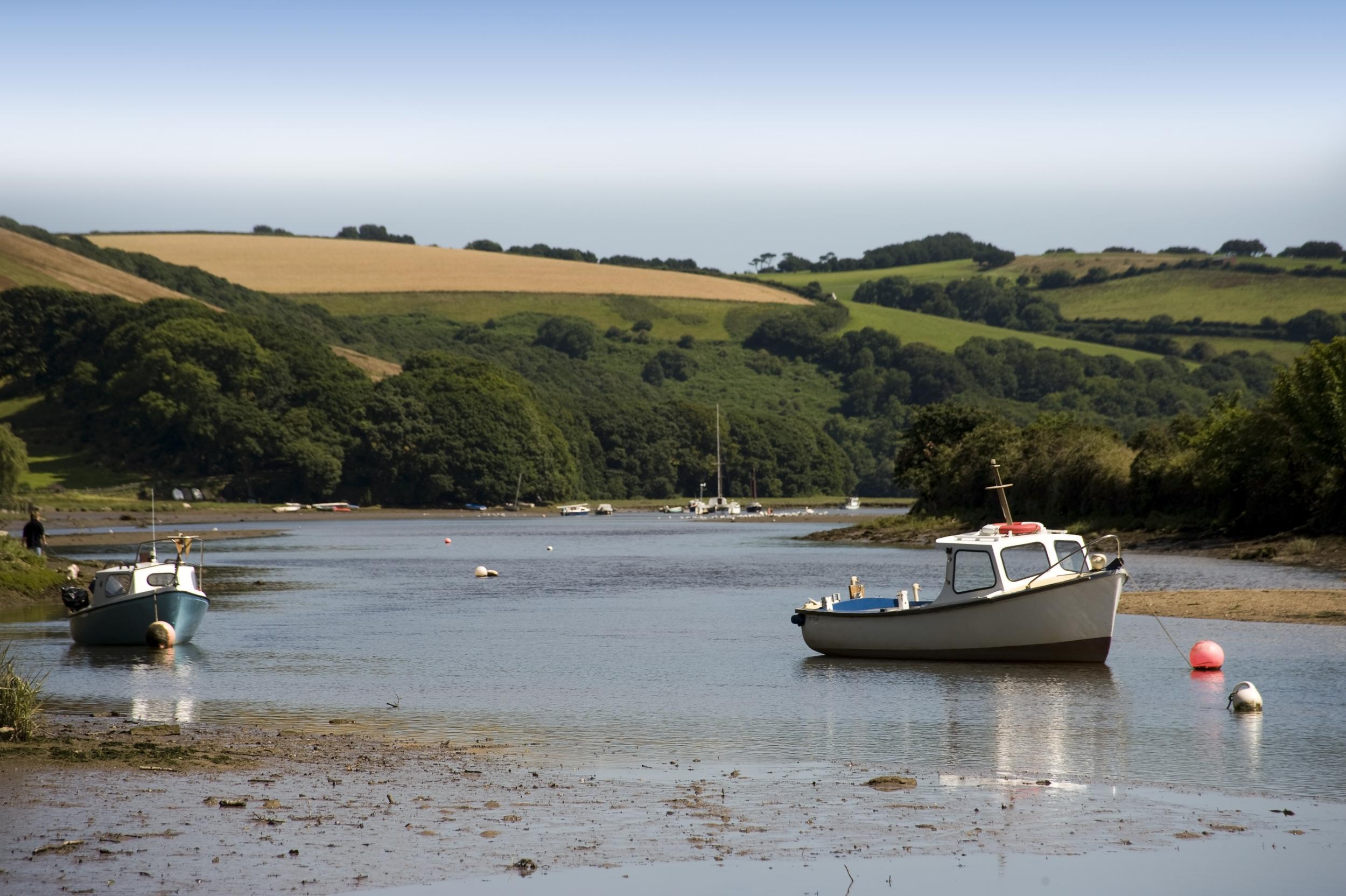Walk of the month: Loddiswell, Devon
With village pubs and picturesque paths along the Avon, this part of south Devon makes for the perfect summer stroll

Devon has a hinterland between coast and moors that can easily get overlooked in the summer stampede for the beaches and tors of Dartmoor. Nowhere is this more apparent than in the village of Loddiswell, a few miles north of Kingsbridge. The B3196 that cuts through the village is a popular route to the seaside but a one-way system neatly deflects traffic away from its heart, and the majority of holidaymakers never seem to pause here. Yet with a decent pub, a 14th-century church and a village store, there is much to see, not least a beautiful walk through the little visited Aune valley.
A local authority booklet describes Loddiswell as “a large, untidy, and plan-less village”. That’s about right, but should be taken as a compliment rather than a criticism. The 14th-century church , St Michael and All Angels, overlooks and dominates the village and repays a visit with its Norman font and 16th-century Bible. The old cemetery on the right faces off with the new, slightly disconcerting one, the latter a quarter empty, awaiting new clients.
A steep lane whisks the walker away from Loddiswell, through a landscape of green hills quilted with earth-red, corn-gold colours. The lane is framed by traditional Devon banks and hedges, locally distinctive solid clumps of earth and hedgerows and which support dormice and greater horseshoe bats.The air is busy with the click and whirr of grasshoppers. This part of Devon appears to have been designed by an architect of helter-skelters: undulating hills below and above the eyeline reach away to the horizon, while little lines of wood rush into the folds where contours meet. So steep are these river valley slopes that the tractors that plough them seem poised to topple backwards.
As the trail descends ever deeper into Devon heartland, ferns emerge from banks and walls while dangling tendrils of ivy and exposed roots of beech and alders combine to create a tropical, balmy feel. I follow a tiny, clattering stream that tumbles into the River Avon by a lovely glade, bathed in sunshine and perfect for lingering by the shallow edges of the Avon. The inlets are sandy, creating miniature inland beaches.

This feels like a lost world: woods huddle close together, rising up the acute slopes. At their base is a line of stacked boulders and moss-covered rocks that form an embankment to keep the river from meandering. Enormous crashed trees lie across dry river beds and at points even partially block the path. Such trees, standing or fallen deadwood are great for insects, and attract woodpeckers, tree creepers and nuthatches. At times, you might feel that a limbo dancing class might have been useful preparation for this walk.
The path clambers onto the semi-hidden remnants of an old steam railway, the Primrose Railway line, a Victorian branch line that ran through the valley from Kingsbridge but closed in 1963. Woodlands muscle in even closer on either side. There are five distinct ancient and semi-natural woodlands here and they occupy a special place in the heart of the Woodland Trust as they are earliest acquisitions made by Kenneth Watkins, founder of the trust. In the middle of the 20th century, the woods had been used widely for shooting and there were fears the woods would be felled and converted to conifer. The alarm sparked by these concerns provided the initial drive for purchases in the valley and the setting up of the Woodland Trust.
The return route along the eastern side of the river slips and stumbles its way through Titcombe Wood, a magical place, with dense pockets of trees and swampy mires with lilies emerging. There’s much to see on the water which is running breathtakingly fast after recent rain: dippers skimming just above and just below the water’s surface; the contrasting harmony and stately movement of swans; and the brisk, strutting menace of rooks, jackdaws and ravens. High above an aerial interplay seems to be at work between buzzards and the steep tree-cloaked summits of the hills.
I retrace my steps to Loddiswell and momentarily consider following the Avon to the sea: beyond here the Aune valley tightens to a narrower cleft and is more sparsely wooded as it makes for the modest seaside suburbia of Bigbury. Instead, I turn downhill off Fore Street on a path to reach Lod’s Well. Lod was a Saxon man who built and owned the village. The spring here led to the village’s name. Erring on the safe side, you are advised to boil the water before drinking it. Or simply head to the pub.
Start/finish: village green, Loddiswell
Distance: 4 miles
Time: 2 hours
OS map: OL20 South Devon
Directions: From Loddiswell village green walk up past the church and turn left, then right to Ham Butts post. Follow the path downhill signposted for “Reads”. Just in front of the farm, bear right through the gate following the fingerpost sign. Go down the narrow path with a stream on the left. The path crosses over a stile and continues downhill. Turn left to follow the river Avon on your right. Follow waymarkers up a series of short flights of steps, cross another footbridge to reach the old railway line bridge and turn left.
Just after a Woodland Trust sign for Aveton wood, you reach a second railway bridge made of red brick. Turn right off the bridge, following the waymarkers back towards Loddiswell, with the river on your right. Return to the first bridge. Cross it and turn left to retrace your steps to Lodiswell with the river on your left.
Travel essentials
Mark Rowe stayed at Cracoe Lodge, Salcombe Retreat, near Salcombe, booked through Coast and Country Cottages (01548 843773; coastandcountry.co.uk). A week costs from £336-£1,132 and shorter stays are available.
Join our commenting forum
Join thought-provoking conversations, follow other Independent readers and see their replies
Comments
Bookmark popover
Removed from bookmarks